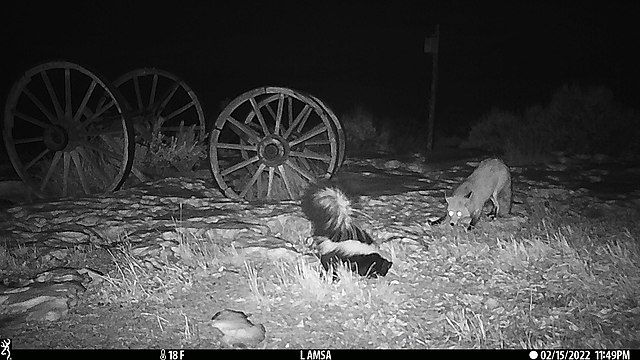Media release
From:
Some mammals were more active in developed areas and also exhibited greater nocturnality during COVID-19 lockdowns when human activity was also high, a paper published in Nature Ecology & Evolution suggests. The findings, based on camera trap data from 21 countries, could help to improve our understanding of how to manage human–wildlife conflict.
Animals have a variety of responses to the presence of humans: some perceive people as a threat, whereas others may seek protection or food. These behaviours also shift depending on whether animals encounter humans in natural habitats or human-modified landscapes, but how this differs among different groups of animals is not well understood.
A. Cole Burton and colleagues analysed images from 102 different camera-trap projects that covered 163 individual species, in 21 countries, both before and during periods of lockdown to investigate how mammal behaviour altered in response to changes in human activity. The authors found that the activity of mammals in more-developed areas (such as towns and cities) increased by around 25% when human activity was higher, and that mammals were less active in less-developed areas (rural and natural habitats). When human activity increased, the authors show that changes in activity depended on mammal group: large herbivore activity increased, whereas carnivore activity decreased. For example, they indicate that among omnivorous wild boars, American black bears and brown bears, activity decreased in human-modified habitats — likely because they feed from bins and fruit trees, which may be risky when human activity is high. The authors also note that mammals tended to become more nocturnal when human activity was high in human-modified landscapes, and that large carnivores were especially sensitive.
The authors say that the unique circumstances of the COVID-19 ‘anthropause’ — a time of reduced human activity during the pandemic — has enabled insights into mammal behaviour, which may help wildlife managers to better protect species that are especially sensitive to humans.



 International
International


